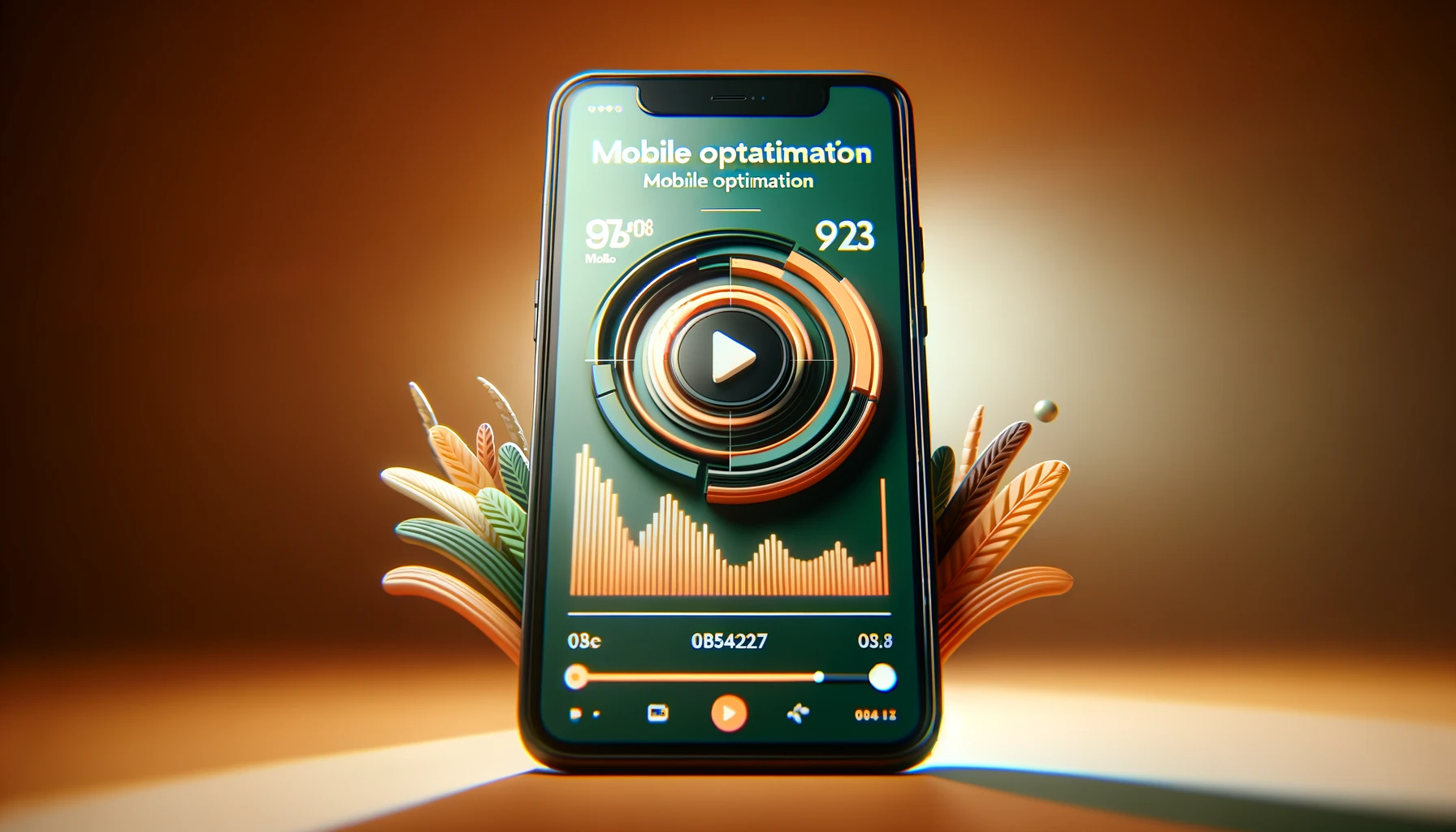Introduction
Let’s talk about something that’s been a game-changer for us at Prayoga Films – Video SEO. Now, I know what you’re thinking: “SEO for videos? Is that really a thing?” Absolutely, and it’s as cool as it sounds.
Picture this: You’ve just made an incredible video. You’re confident it’s going to be a hit. You upload it, and then… crickets. What happened? Well, it’s like throwing a party but forgetting to send out the invites. Your video is the party, and SEO is your way of sending out those digital invites.
We learned this the hard way. Our videos were like hidden treasures that no one knew about. But once we cracked the code of Video SEO, especially on social media giants like Instagram and TikTok, it was like turning on a spotlight over our content. Suddenly, people were watching, engaging, and loving our work.
So, grab a coffee, and let’s dive into some neat tricks and strategies that will make your videos shine on social media. Trust me, it’s not just about getting views; it’s about connecting with your audience in a way you never thought possible. Ready to boost your brand’s digital charisma? Let’s get started!
Understanding Video SEO
![]()
Let’s break down what Video SEO actually is. Think of it like helping a friend (your video) get noticed at a huge party (the internet). It’s all about making your videos more visible and appealing in the digital space, especially on search engines and social media platforms.
Here’s a quick story to paint a picture: Once, we posted a video that we thought was our best yet. It was visually stunning, but it just sat there with barely any views. That’s when we realized, creating great content isn’t enough; it needs to be findable too. Video SEO is your ticket to making that happen.
What Does Video SEO Involve?
- Increased Visibility: Just like SEO for blogs or websites, video SEO helps your content climb up the search results ladder. This means more eyes on your videos.
- Engagement: When your videos pop up in relevant searches, you attract an audience genuinely interested in what you have to say or show. This leads to better engagement.
- Brand Awareness: A well-optimized video is like a walking, talking billboard for your brand. It boosts recognition and loyalty.
- Consistent Growth: Regularly applying Video SEO strategies ensures that your content stays visible over time, not just a one-hit-wonder.
Remember, as content creators and marketers, our videos are our voices. Making them heard amidst the noise of the internet is what Video SEO is all about.
Effective Keyword Research for Video Content
 The cornerstone of Video SEO? Keywords. Think of them as the secret sauce that makes your content searchable and relatable. It’s not just about using any words, but the right words. Keywords are what your audience types when they’re hunting for content like yours.
The cornerstone of Video SEO? Keywords. Think of them as the secret sauce that makes your content searchable and relatable. It’s not just about using any words, but the right words. Keywords are what your audience types when they’re hunting for content like yours.
Finding the Perfect Keywords
- Understand Your Audience: What are they searching for? What language do they use? For instance, if your audience is into fitness, they might search for “home workouts” or “healthy meal prep.”
- Use Keyword Tools: Tools like Google Keyword Planner and YouTube’s search suggestion feature are goldmines. They show what’s trending and help you align your content with audience interests.
- Analyze Competitors: Check out what keywords your competitors are using. If they’re working for them, they might work for you too.
Applying Keywords to Your Videos
Once you’ve got your keywords, sprinkle them into your video’s title, description, and tags. But remember, it’s a sprinkle, not a dump. The key is to use them naturally. For example, if your video is about baking, your title might be “Easy Vegan Baking Recipes for Beginners” instead of just “Baking.”
At Prayoga Films, we learned that the right keywords can make or break your video’s visibility. By targeting what our audience was searching for, we saw a significant increase in views and engagement. It’s like giving people exactly what they didn’t know they needed!
Up next, we’ll dive into how to make the most out of your video metadata, because, let’s face it, details matter when it comes to SEO!
Optimizing Video Metadata
Metadata might sound technical, but it’s really just about the details that describe and categorize your video. It’s like the label on a box, telling viewers (and search engines) what’s inside.
Making the Most of Metadata
- Titles That Tell a Story: Your title is the first thing people see. Make it catchy, but also clear and SEO-friendly. Include your primary keyword in a way that feels natural.
- Descriptions That Draw People In: This is where you can go into more detail. Explain what your video is about, and yes, sprinkle in those keywords. But also, make it engaging. Think of it as a mini blog post.
- Tags for Extra Context: Tags help categorize your video and improve its chances of showing up in relevant searches. Use a mix of broad and specific tags.
We once had a video that we were super proud of, but it wasn’t getting much traction. Then, we tweaked the title and description, making them more keyword-focused and descriptive. The change was like night and day. Views started climbing, and it was like our video finally found its voice!
Metadata might seem like a small part of the puzzle, but it’s mighty. It’s your chance to give search engines and viewers a sneak peek into what your video is all about.
 The Power of Engaging Thumbnails
The Power of Engaging Thumbnails
Think of thumbnails as the cover of your book – they can instantly attract or deter viewers. In the scrolling world of social media, your thumbnail is your first (and sometimes only) chance to grab attention.
Crafting Thumbnails That Captivate
- Be Visually Compelling: Use bright colors, clear images, and intriguing visuals. Your thumbnail should make someone stop scrolling and think, “I need to watch this!”
- Include Text Overlays: If appropriate, add a brief, catchy phrase or your video’s title in bold, readable text. This reinforces what your video is about.
- Stay Relevant: Ensure your thumbnail accurately represents your video’s content. Misleading thumbnails can lead to a quick bounce, which hurts your SEO.
or simply check out our portfolio and select what you wanna make and let us do the rest!
We had a video about travel photography tips, but it wasn’t getting many clicks. So, we changed the thumbnail to a more striking image with bold text saying, “Transform Your Travel Photos!” Views soared. It was a clear lesson in the power of a well-designed thumbnail.
Remember, a thumbnail is not just an image; it’s a visual invitation to your audience.
Video Transcriptions and Closed Captions
Transcriptions and captions might not be the first things you think about when uploading a video, but they’re crucial for SEO and accessibility.
Enhancing SEO with Text
- Search Engines Love Text: While search engines are smart, they can’t watch videos. Providing text in the form of transcriptions and captions gives them something to index.
- Accessibility Boosts Reach: Captions make your content accessible to a wider audience, including those who are deaf or hard of hearing. It’s not just inclusive; it’s smart marketing.
We once shared a video about a local festival, but forgot to add captions. After adding them, not only did the views increase, but we also received heartfelt thanks from the deaf community. It was a powerful reminder that inclusive content is not only good SEO but also good karma.
Captions and transcriptions might require extra effort, but they pay off by making your content more searchable and accessible.
Leveraging Schema Markup for Videos
Schema markup might sound like a high-tech term, but it’s essentially about making your video content easily understandable for search engines. It’s like giving search engines a roadmap to what your content is about.
Utilizing Schema Markup
- Descriptive Rich Snippets: By adding schema markup, you provide details like video duration, description, and thumbnail URL. This can result in rich snippets that stand out in search results.
- Better Understanding for Search Engines: Schema markup helps search engines understand the context of your video content, leading to more accurate indexing and visibility.
At Prayoga Films, we experimented with adding schema markup to some of our videos. The results were impressive. Our videos started appearing with rich snippets in search results, which not only looked more professional but also attracted more clicks.
Adding schema markup is a bit technical, but it’s a one-time effort that can significantly enhance your video’s search performance.
Ensuring Mobile-Friendly Video Content
 In today’s world, a vast majority of users access content via mobile devices. Therefore, optimizing your video content for mobile is not just a nice-to-have; it’s a necessity.
In today’s world, a vast majority of users access content via mobile devices. Therefore, optimizing your video content for mobile is not just a nice-to-have; it’s a necessity.
Tips for Mobile Optimization:
- Test on Different Devices: Make sure your videos look great on various screen sizes. What looks good on a desktop might not translate well to a smaller mobile screen.
- Consider Loading Times: Mobile users often have limited bandwidth. Optimize your video file sizes to ensure quick loading times without sacrificing quality.
- Vertical Videos for Social Media: Platforms like Instagram and TikTok are primarily used on mobile devices. Creating vertical videos makes them more user-friendly and engaging for mobile viewers.
- Mobile-Friendly Landing Pages: If you’re directing viewers to a website, ensure that the landing page is mobile-optimized. A seamless transition from video to webpage improves user experience and engagement.
We noticed a significant increase in engagement when we started formatting our videos specifically for mobile viewing. It wasn’t just about the number of views; the audience spent more time with our content, leading to higher engagement rates.
Explore the best trends in mobile optimization for 2023 on Plerdy’s blog to enhance your video content’s mobile appeal.
Ensuring your video content is mobile-friendly is crucial in this mobile-first era. It’s all about providing the best possible experience to your audience, no matter where or how they’re watching your videos.
Promotion and Sharing of Video Content
Promoting and sharing your video content is as important as creating it. You’ve made this fantastic video, now it’s time to make sure people see it.
Strategies for Effective Promotion:
- Multi-Channel Sharing: Don’t limit your video to just one platform. Share it across social media, embed it in blog posts, and even consider email newsletters.
- Collaborate and Cross-Promote: Partner with influencers or brands in your niche. Their endorsement can introduce your content to a wider, yet relevant audience.
- Engage with Your Audience: Encourage comments and shares. The more people interact with your video, the more it signals to platforms that your content is worth boosting.
- Utilize Paid Promotion: Sometimes, a little investment can go a long way. Consider using paid advertising options on platforms like YouTube or Facebook to reach a broader audience.
When we collaborated with a travel blogger to promote our documentary, the results were astounding. Their followers were genuinely interested in our content, leading to higher engagement and more shares. It was a win-win!
Effective promotion is about being seen in as many relevant places as possible. It’s about creating a buzz around your content.
Stay updated with the latest trends in social media video marketing by visiting Quickframe’s blog
Social Media SEO: A New Frontier
 Social media SEO is a different beast compared to traditional SEO, but it’s equally crucial. It’s about optimizing your content specifically for the social media landscape to enhance discoverability and engagement.
Social media SEO is a different beast compared to traditional SEO, but it’s equally crucial. It’s about optimizing your content specifically for the social media landscape to enhance discoverability and engagement.
Key Points for Social Media SEO:
- Platform-Specific Optimization: Each social media platform has its unique algorithm and user behavior. Customize your SEO strategy for each platform, whether it’s Instagram, TikTok, Facebook, or Twitter.
- Engaging and Relevant Content: Always prioritize content quality. Your videos should be both engaging and relevant to your target audience. This not only attracts viewers but also encourages shares and interactions.
- Regular Updates and Interaction: Keep your social media profiles active and interact with your audience. Regular posting and engagement signal to the platforms that your content is valuable and should be promoted.
- Hashtags and Keywords: Use relevant hashtags and keywords in your posts. They play a crucial role in making your content discoverable within the platform.
We found that tailoring our content and hashtags for each specific platform significantly increased our reach. For instance, what worked on Instagram didn’t necessarily work on TikTok, and vice versa. Understanding the nuances of each platform made a big difference.
Social media SEO is about understanding and adapting to the evolving landscape of these platforms.
Video SEO on Instagram and TikTok
Instagram and TikTok have emerged as dominant platforms for video content, and optimizing for these platforms requires specific strategies.
Instagram Video SEO:
- Engaging Captions with Keywords: Write captions that not only capture the essence of the video but also include relevant keywords.
- Utilize Instagram’s Hashtag Feature: Hashtags increase your content’s discoverability on Instagram. Use a mix of popular and niche hashtags related to your video.
- Leverage Instagram Stories and Highlights: Regularly update your Stories and save the best ones as Highlights. This keeps your profile active and engaging.
TikTok Video SEO:
- Keyword-Rich Descriptions: Include trending and relevant keywords in your video descriptions.
- Use Popular and Relevant Hashtags: Similar to Instagram, hashtags are crucial on TikTok for reaching a wider audience.
- Consistent Posting: Regular uploads keep your audience engaged and signal to TikTok that your profile is active, increasing the chances of your content being promoted.
Adapting our content strategy for each platform played a key role in increasing our visibility. For example, on Instagram, we focused on high-quality thumbnails and hashtags, while on TikTok, we emphasized on-trend keywords and engaging, snappy content.
Optimizing for Instagram and TikTok can significantly boost your video content’s reach and engagement. It’s about understanding the unique characteristics of each platform and using them to your advantage.
Conclusion
Embarking on the journey of Video SEO is like unlocking a secret realm where your content doesn’t just exist; it thrives. We’ve traversed through the essentials: from understanding the basics, conducting effective keyword research, optimizing metadata, creating engaging thumbnails, to embracing the nuances of social media SEO for platforms like Instagram and TikTok.
Remember, the world of Video SEO is dynamic and ever-evolving. Keeping up with the trends, experimenting, and adapting your strategies are key to staying relevant and visible. At Prayoga Films, our journey has been filled with learning and growth, and we’re excited for you to embark on your own SEO adventure.
So go ahead, apply these strategies, and watch your content shine in the bustling digital landscape!
Interested in enhancing your video content’s SEO? Contact us for a personalized consultation.

